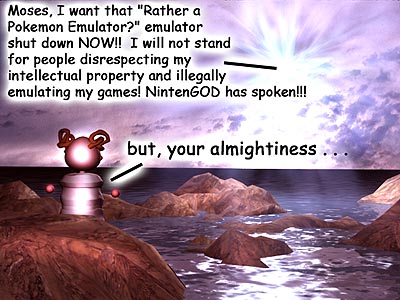 |
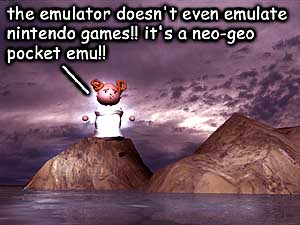 |
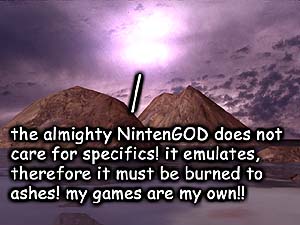 |
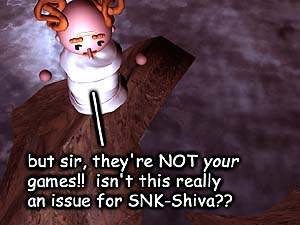 |
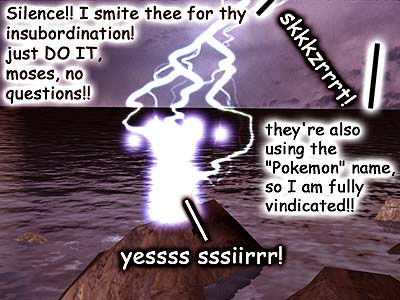 |
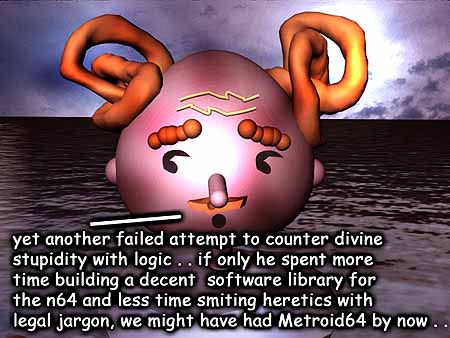 |
FINAL EDITION
copyright (c) 1999 Sam Pettus (aka "the
Scribe"), all rights reserved
All copies must not be altered in any way, including but not limited to reformatting and conversion to alternate document formats, without the express consent of the author. The sole exception is for necessary formatting changes that may be required to adapt this document to suit your particular needs; however, the complete original text must be retained in as close a layout to the original as possible. For any questions in this regard, please contact the author.
No copy may be reproduced in whole or in part within a for-profit commercial publication or Internet site without the express consent of the author. The author recognizes the right of said vendors to reproduce limited portions of his work under the "fair use" clause of the appropriate sections of the U.S. Copyright Act and the Berne Convention for the Protection of Literary and Artistic Works.
Any trademark or other such indica to be
found within this document is the exclusive property of its respective
owner, and is reproduced here merely for the sake of reference.
When crime is finally outlawed, then only criminals will live in America.From an anonymous Internet posting
 |
 |
 |
 |
 |
 |
FRANKENSTEIN UNLEASHED
The time is the
wee hours of the morning. The setting is inside the confines of a
small, darkened room. Crumpled printouts and soft drink cans are
overflowing out of a small wastepaper basket, while a medium-sized contingent
of insects and various rodents are feasting upon the remains inside an
ever-growing pile of take-out food containers in a far corner. The
human occupant of the room appears unconcerned; in fact, he has been working
for days, and has taken to humoring himself by making sure that some morsels
are left behind for his small guests. The erstwhile hacker takes
the last swig from his drink, crushes the can, and then throws it at the
basket. It bounces off of the top and into a nearby pile of junked
computer hardware, but by this time he has turned back to his console and
is concentrating intently on the computer code on which he is working.
Beside him are two monitors - one showing various bits of screen garbage
and the other showing a videogame display. The latter is connected
to a strange-looking device sitting on a nearby table. In another
life it might have been an older model computer, videogame console, or
some other piece of computer hardware. Today it has been stripped
to the bare boards, data lines, and power leads, and has enough logic probes
and other such monitoring devices attached to make it look like some weird
Kafkaesque mutation of its former self.
Suddenly, there
is flickering on the monitor screen that was displaying the garbage but
a few moments ago. The hacker looks up with furrowed brow, preparing
to swear profusely. The screen goes black for a few seconds, and
then a display pops up. It is an almost perfect match for the one
next to it - the one coming from the Rube Goldberg box on the table.
The young man is overjoyed - he kicks back in his chair away from his console
and into another pile of parts behind him. The resultant crash startles
his little guests and they scamper off, but he is no longer paying attention
to them; the young man has become excited by the almost-matching displays.
He grins, begins laughing, and then raises his clenched fist into the air,
exclaiming, "That's it! I did it!"
Sound familiar?
This scene, or something vaguely similar to it but probably less dramatic,
is familiar to anyone who has worked on a computer project for an extended
period of time and has been played out by many a emulator developer around
the world. It doesn't matter if the place is a converted garage and
the young man is an American teenager, or if the place is an apartment
inside a Tokyo high rise and the young Japanese man is shouting "Yatta!
Yatta!" over and over again to the irritation of his neighbors, or if the
place is a college dorm somewhere in Mannheim and the awed German college
student at the console can do nothing but whisper "Mein Gott!" in reverent
awe. It really doesn't matter either if the unusual device on the
table used to be an Amiga computer, or a Sega Master System, or even an
Hewlett-Packard scientific calculator in a former life. Another triumphant
milestone in the emulation community has been achieved. Somewhere
out there in the murky shadows and backwaters of the computer underground,
another privately developed emulator has been born.
We've already
seen that emulation is a legitimate use for a computer. We have established
that emulation in one form or another has been with us for many years.
That now leads us to the question that all developers who are not affiliated
with original product vendors must ask themselves: "Is it legal for
me to develop an emulator?"
THE CONCEPT OF INTELLECTUAL PROPERTY
"The introduction
of videogame emulators represents the greatest threat to date to the intellectual
property rights of videogame developers." So says Nintendo concerning
emulation in their industry, but the same can be said for other computer
industries as well; the operating system industry (Microsoft Windows
and SoftWindows), the computer hardware industry (Gateway 2000 and
WinUAE), and so on. Nintendo should know - they are one of the
biggest vendors in the videogame industry and have a widespread reputation
for having a hair-trigger legal attitude in this regard. Other companies
within this and other related industries have also expressed concern over
the growing popularity of emulation and taken legal action on their own,
and the process will no doubt continue. Why? Do they just like
picking on people who like "old stuff" or "cool cross-platform tools,"
or is there something else involved? There are a number of concerns,
but almost all of them can be grouped together under the legal term that
Nintendo employs in its emulation policy statement - intellectual property
rights.
So what is
intellectual property? At the risk of oversimplifying the legal
definition, let's reduce the concept to its fundamentals. Intellectual
property is one or more unique creations that belong to you and nobody
else. They can be anything, so long as you can demonstrate that
said items are unique. These items embody an particular set of ideas
or productions to which you own all legal rights. They do not necessarily
have to be created by you; they may have been produced by someone in your
employ or under contract for you, known in legal circles as a "work for
hire," or you may have bought the rights to them from another party, which
is commonly referred to as a "technology transfer." Regardless of
how you obtained the ownership of these items, your intellectual property
rights imply that these creations are yours and yours alone to do with
as you please, and nobody else has the right to do anything with them without
your express consent. Governments around the world recognize the
concept of intellectual property rights, and it is usually embodied in
one of three forms: the patent, the copyright, and
the trademark.
WHAT ARE PATENTS?
Patents are awarded
to creations of the hand. Again, at the risk of oversimplification,
patents
are used to provide legal protection to any type of device that can be
created or any process of creation in and of itself. Just take
a moment to look around you. Many of the physical objects you see
are covered by some kind of patent, or may have been produced using some
kind of patented process. Not everything is covered, though, because
patents
do not cover generic concepts or manufacturing methods. For example,
just about all of the parts inside your computer are patented and many
of the components on the individual boards also have patents, whereas the
chair upon which you are seated is probably not patented. There is no
such thing as an "implied" patent; you must apply for a patent before
you can enjoy the rights and benefits of patent protection. There is
no such thing as "fair use" of patented material, as this runs counter
to the exclusive nature of patent protection. It should also be noted
that governments tend to be quite stringent when it comes to awarding patents;
you must prove that your device or process is either a unique creation
or a creation that uses existing resources in a new and unique way.
In the computer
industry, patents used to be limited to hardware, but recent changes
in federal law allow patents to cover software as well. These
are awarded under certain limited conditions; for example, a patent can
be used to protect a piece of software if it contains a unique process
like the mathematical algorithms used in compression software, or aids
in the working of a unique process within the hardware itself. The
main reason behind this change is that patent protection gives software
developers, owners, and vendors more legal leverage than does copyright
protection - copyrights only protect the expression of the concept (the
code as a whole) and not the many processes it might enable.
In the United
States, patents are governed under the terms of the U.S. Patent Act (35
USC). The United States is also a signatory to the internationally
recognized Patent Cooperation Treaty, which means that it honors the patents
of other countries and they honor U.S. patents in return. United
States law was recently changed with regards to the lifetime of a patent;
as a result, patents now last twenty years from the date of original application
(not the date the patent was granted, as was previously the case).
Extensions are sometimes granted under certain circumstances, but the maximum
length of extension cannot by law exceed five years from the end of the
original patent. Patents are further governed in the United States
under the terms of the Intellectual Property Rights Act (37 CFR).
For more information, you can drop by the official web site of the U.S.
Patent and Trademark Office.
The University
of California at Berkeley has a course on intellectual property rights
which I highly recommend to anybody who might be attending that institution.
I have borrowed from their course outline to present the major points with
regards to patent protection and the computer industry:
What is patentable?
Copyrights are
awarded to creations of the mind. These include but are not limited
to such forms of expression as printed matter, music, and all forms of
audiovisual production. Examples include books, poems, essays, epics,
songs, works of art, musicals, movies, television shows, plays, animation,
and so on. With regards to the computer industry and at the risk
of oversimplifying things again,
copyright protection is usually limited
to any and all types of computer code and digital audiovisual works:
programs, programming languages, program source code, specialized databases,
expert systems, unique sound and/or graphic creations, specialized computer
software (such as but not limited to games, applications, and operating
systems), and any digital reproduction of the old-style media mentioned
earlier.
There are
two forms of copyright. Implied copyrights cost nothing
and are assumed at the moment of creation, but are difficult to prove and
protect. On the other hand,
statutory copyrights are granted
by a government copyright office (usually for a small fee) and ensure full
legal protection for said work under applicable laws. In the United
States, copyrights are awarded and protected under the terms of the U.S.
Copyright Act (17 USC), which itself is in sync with the internationally
recognized Berne Convention for the Protection of Literary and Artistic
Works (828 UNTS 221). It is important to note that the provisos
of Berne do not require the inclusion of a copyright notice within a work
to qualify for copyright protection, as was previously the case under
the old 1976 U.S. Copyright Act.
As a general
rule, copyrights for all commercial works, which are regarded as "works
for hire" by copyright law, that were created on or after 1 January 1978
last for the lifetime of the copyright holder plus an additional seventy-five
years. As an aside, this includes all personal computer programs
and practically all videogame releases, and only excludes a mere handful
of of pre-1978 concepts for mainframes and early arcade videogames that
are still in use today. Extensions are no longer granted for copyrighted
works except for items that were copyrighted before 1978, but these can
only be extended for a maximum of seventy-five years before they expire.
Some of the exceptions that I named are protected by copyright, but not
all may have been extended (you need to check with the original vendor
or copyright owner for more details). Just like patents, copyrights
are further governed in the United States under the Intellectual Property
Rights Act (37 CFR). For more information, you might want to drop
by the official web site of the U.S.
Copyright Office.
Again, as with
the patent, I have borrowed from the Berkeley course outline and adopted
their format to note the distinctions with regards to copyright protection
and the computer industry:
What is copyrightable?
Trademarks are
awarded to creations of the marketplace. These include but are not
limited to names, terms, corporate "mascots," and advertising gimmicks
such as corporate logos and other such graphics designs. The core
idea behind a trademark is that it creates a unique image or association
within the mind of a consumer that is linked to a particular company or
company product.
A trademark has
the longest life of any form of intellectual property protection.
They are initially granted for a term of ten years, but they become incontestable
after the fifth continuous year of use. Some countries require periodic
proof-of-use or maintenance fees, but the general rule-of-thumb is that
trademarks
last forever unless they fall into disuse. It is up to the owner
to show proof-of-use and continue using it in a proper manner, otherwise
it passes back into the public domain. In such cases, the trademark
is said to have been abandoned, and anybody can then use it or register
it themselves. Even so, limited forms of public domain use of
a registered trademark are acceptable (i.e. no license from the owner)
so long as the owner deems the use to be noninfringing - that is, it
doesn't harm the image that the trademark is supposed to represent.
In these cases, the use must somehow acknowledge its owner, and there are
specific ways of doing so that are laid out under law.
Patents and trademarks
usually go hand-in-hand - you patent a product or process, then create
a trademark to advertise it. The Landham Act (15 USC 1051-1127) is
the key law within the United States that governs trademarks; they are
also covered to a large extent by the same laws that govern patents (35
USC, 37 USC), and the same international treaties also apply.
My copy of the
Berkeley course outline does not cover trademarks; nevertheless, I have
adopted their format to note the distinctions with regards to trademark
protection and the computer industry:
What can be trademarked?
THE LEGAL DANCE OF EMULATION DEVELOPMENT
"So why should
I care about all this legal claptrap?" the more impatient among you are
probably screaming by now. "I just wanna program a emulator, not
go to law school!" If you're going to write an emulator, then
you're going to be walking all over one or more of these forms of legal
protection for the original vendor and software developers. "How?"
you may ask? Let's see just how that can happen with videogame emulators,
since these are the cause of emulation's current woes.
A videogame console,
be it the standalone coin-op type found in the arcades or the ubiquitous
book-sized boxes found in people's homes, is an extremely complicated piece
of engineering. You have to have the code for the game(s) that it
will run for starters. Next, you have to have the hardware that will
make it possible for users to play the game(s) the way you intended.
You have to have a way to store the game inside the console; likewise,
you need some kind of processing hardware to interpret and execute the
many lines of code within the game(s). You have to have some kind
of method to generate a visual display. Said output must properly
project the imagery that the game is creating in such a fashion so that
it will not cause the user to suffer eye strain or possible seizures.
Sound is not a necessary requirement but is extremely desirable, since
it adds to the impact of the gaming experience on the user. You must
have some kind of control interface so the user can interact with the game;
this can vary wildly depending on the hardware and/or intended experience(s)
involved. Finally, if the console is designed to handle more than
one kind of game, you will need what the legal profession terms a "delivery
system." This is a means whereby your game(s) can be stored outside
of the console until such time as gameplay is desired, at which time they
can be connected to or inserted within the console in order to deliver
the game code into the console's hardware for execution.
Wow, that's quite
a tall order, isn't it? That involves a lot of specialized knowledge
in order to make such a piece of computer hardware a reality. This
is where intellectual property rights become involved. It really
doesn't matter what kind of emulator you are designing for whatever system
you have in mind to emulate - you have to do it in such a way as to avoid
infringing upon the intellectual property rights of the original vendor
and its licensees. Remember our discussion of patents, copyrights,
and trademarks? Here is where all of that "legal claptrap" comes
into play.
INTROSPECTION
So let's assume that an independent developer has found some means of surmounting the many legal and technical obstacles in order to create a working emulator. How can the original vendor deal with its release? How can the developer combat the almost certain lawsuit that will be thrown his or her way? Does it matter whether or not the emulator is commercially released, or just handed out free in the public domain? Can the original vendor find some way to take advantage of the situation to its profit, or do we end up with nothing but a shouting match and lots of flame email? In short, just what is at stake with the release of an independently developed emulator? That's a good question, and that is what we shall look at next.
REVIEW QUESTIONS
1. According to Nintendo, what represents the greatest single threat to the videogame industry? Why?
2. What is "intellectual property?" How is one entitled to intellectual property rights?
3. What is the main hurdle one must overcome to have his or her creation qualify for intellectual property protection?
4. How do governments protect intellectual property rights? To what areas do these protections apply?
5. What are two different forms of protection for a work considered to be an expression? Which is preferable? Why? Give examples of each.
6. How does each form of intellectual property protection relate to the computer industry?
7. What two forms of intellectual property protection can be used to cover computer software? How can it qualify for both? Why would you want to use one as opposed to the other?
8. What form of intellectual property protection is said to last forever? Is this true, or not? Explain why.
9. Which two forms of intellectual property protection usually go hand-in-hand? Why?
10. What are two methods developers of so-called "clone products" can use to avoid intellectual property disputes?
11. In your own words, describe the best way developers have found to produce a clone product while at the same time avoiding legal hassles from the original vendor. How has this technique been justified in the courts?
12. If the developer of a clone product cannot surmount certain technical obstacles, then what can they do? Describe several methods of employing this alternate technique.
13. Is it legal for an end user to develop an emulator "for private use only?" How about "as a backup for the original console?"
14. Apply the concept of intellectual property to the two Amiga-based examples given in the introduction. What are the various ways in which intellectual property rights were honored, abused, or violated?
QUESTIONS TO PONDER
1. In your own words, describe how you as a vendor could pursue somebody who has violated your intellectual property rights by releasing an emulator. Give specific examples as to how you would achieve this.
2. In your own words, describe how you as a developer could create an emulator that would not infringe upon the intellectual property rights of a vendor. Give specific examples as to how you would achieve this.